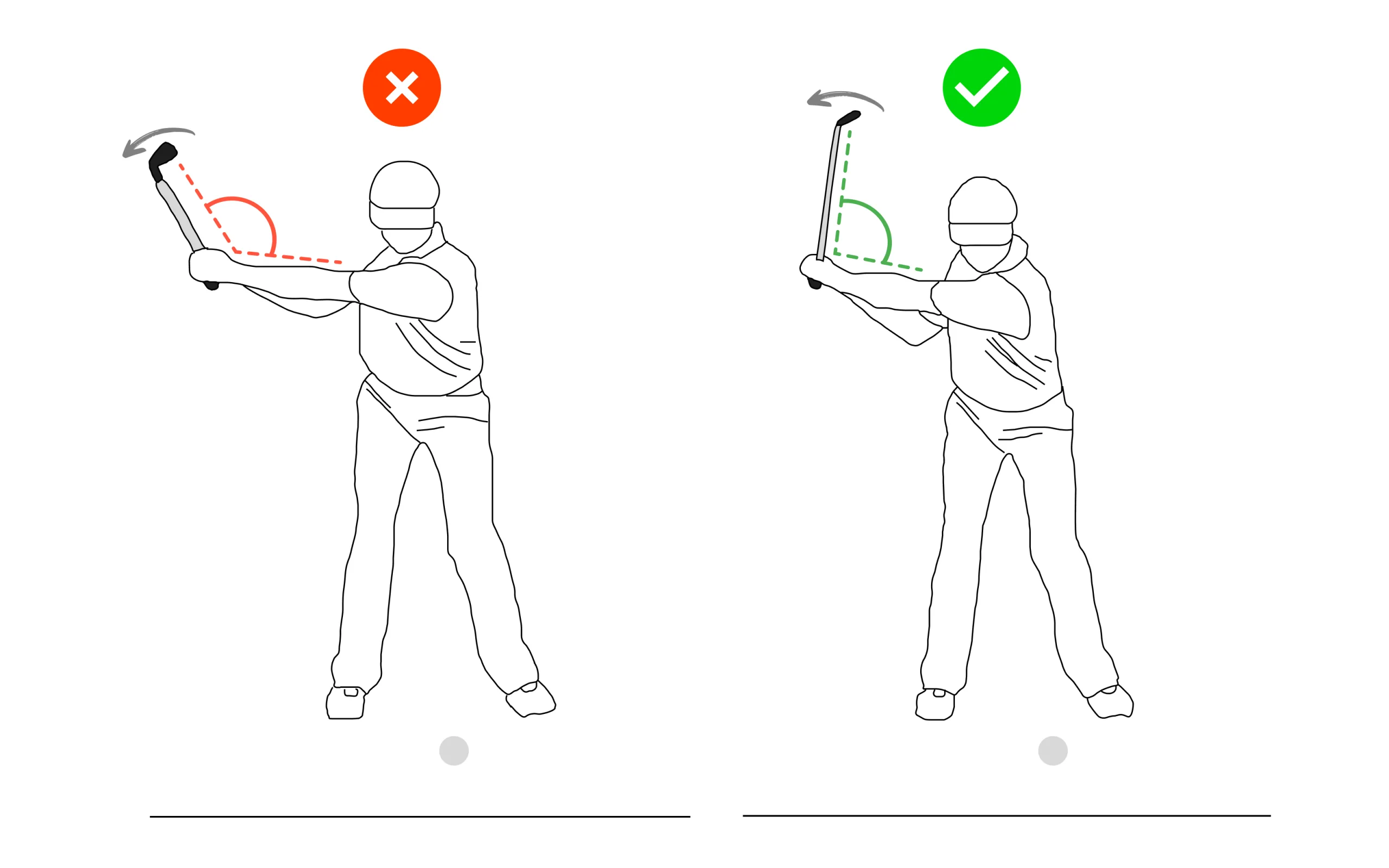
Casting is one of the most common causes of loss of power and excessive spin on the golf ball. It is defined as an early release of the golf club during the downswing. This can result in a weak impact position with the left wrist being cupped at impact.
Alternate names
- Losing Lag
- Early Release
- Scooping the Wrist
Causes of Casting
Casting in golf occurs when the wrists prematurely lose their hinge during the downswing, resulting in a loss of power and energy transfer.
Golf Technique DeficiencyInactive lower body: When the lower body doesn’t initiate the downswing, the upper body overworks and throws the club.
Overactive upper body: When the shoulders and arms initiate the downswing, it leads to casting.
Incorrect grip: A tight grip can lead to casting.
Incorrect wrist angles: Incorrect wrist angles at the top of the backswing can cause casting.
Drills to Fix the Issue
Lead Hand Hinge Drill
Builds wrist hinge awareness and helps prevent casting by isolating the lead hand.
- Grip the club using only your lead hand.
- Take your normal golf stance.
- Swing back slowly, focusing on creating a proper wrist hinge.
- Continue through the swing, allowing for a natural release.
- Keep the motion smooth and controlled — avoid flicking or scooping.
- This drill teaches your lead hand to maintain lag and guides a proper release without interference from the trail hand.
🎯 Goal: Strengthen lead-hand control, train proper wrist hinge, and prevent casting when both hands are on the club.
Chair Clearance Drill
Trains proper hand path and body positioning through impact to prevent early extension and casting.
- Place a chair beside you, about 3 feet away on the target line side.
- Get into your regular golf stance.
- Make a backswing as you normally would.
- In the follow-through, stop when your club shaft is roughly parallel to the chair.
- Take a small step toward the target line.
- From this new position, pull your hands through the swing path, keeping the club from touching the chair.
- If the club avoids the chair, your hands are on the correct path and you’re staying in posture.
🎯 Goal: Prevent early extension and casting by promoting proper hand path and body control through impact.
Underarm Stick Clearance Drill
Improves swing plane and prevents over-the-top motion by encouraging proper body rotation and hand path.
- Hold your golf club and alignment stick together, with the alignment stick standing tall — nearly your full height.
- Position the alignment stick so it runs under your lead arm and extends out behind you.
- Take your normal golf stance while holding both.
- Make a slow, controlled swing.
- Focus on rotating your body and keeping your hands on plane to avoid getting hit by the alignment stick during the swing.
🎯 Goal: Promote an on-plane backswing and downswing while reducing steep, over-the-top movements.
Fishing Rod Drill
Trains delayed release and eliminates casting by providing instant feedback on swing path and wrist action.
- Stand sideways to a wall, about one arm’s length away.
- Take your normal stance and grip the club as usual.
- It doesn’t matter how you reach the top — swing up in your preferred way.
- On the downswing, make a smooth follow-through without hitting the wall.
- If your club strikes the wall, it means you’re casting or releasing too early (like “fishing”).
- Repeat until you can swing freely without contact.
🎯 Goal: Promote a proper lag and hand path through impact by preventing early release.
Physical Limitations Contributing to the Error
Limited Wrist Mobility: Restricted wrist flexion and extension can prevent the proper cocking and holding of the wrists during the downswing, leading to an early release.
Lack of Core Strength and Stability: A weak core makes it difficult to maintain a stable posture and control the swing’s sequence, often resulting in the arms and wrists taking over, causing casting.
Tightness in Forearm Muscles: Tight forearm muscles can hinder the subtle wrist movements needed to maintain lag, leading to an early release.
Incorrect wrist angles: Restricted hip movement can cause the upper body to compensate, which leads to the golfer throwing the club from the top of the swing, and therefore casting.
Exercises to Build Movement Capacity
Wrist Curls & Extensions – Strengthens wrist and forearm stability.
Pallof Press – Builds core control and resists early hand involvement.
Shoulder External Rotations – Improves trail arm positioning and control.
How to Adapt Your Swing to Physical Limitations
- Use a shorter backswing to reduce stress on wrists and simplify timing.
- Focus on rotation and body-driven swings to reduce arm dominance.
- Use a lighter shaft or club to allow easier lag retention.
Related Swing Errors
Precursor Errors (Triggering Issues)- Poor weight transfer
- Reverse pivot
- Scooping
- Loss of distance
Tools and Training Aids
- Lag Stick Trainer – Gives real-time feedback on wrist angles.
- Impact Ball – Promotes arm-body connection and delays release.
- Tour Striker Club – Forces proper shaft lean and punishes casting at impact.
